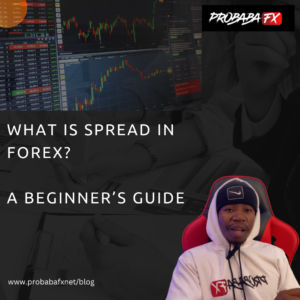There are several ways to benefit from financial markets in the trading sector. Of them, day trading and swing trading are two well-known strategies that stick out. Any prospective trader must comprehend the differences between these two trading philosophies, as they have a big influence on their trading performance. To assist you in selecting the trading strategy that best meets your objectives, we will examine the main distinctions, approaches, and factors for swing and day trading in this post.
Day Trading Explained:
Day trading is one of the most exciting and demanding trading strategies in the fast-paced world of financial markets. Individuals who buy and sell financial products on the same trading day to profit from short-term price swings are known as day traders. This essay will dig into the realm of day trading, revealing the methods, tools, and critical insights required to thrive in this dynamic trading strategy. Unlike long-term investors, who may hold assets for months or years, day traders seek to profit from price volatility occurring throughout the day.
Key Characteristics of Day Trading:
Time Horizon: Day trading involves very short timeframes, typically minutes or hours. Positions are rarely held overnight.
Frequency of Trades: Day traders execute multiple trades during a single trading session, seeking to identify opportunities in both rising and falling markets.
Trading Markets: Day traders can focus on various financial markets, including stocks, options, commodities, and especially the foreign exchange (Forex) market.
Risk Management: Effective risk management is crucial in day trading. This includes setting stop-loss orders to limit potential losses.
Technical Analysis: Technical analysis plays a significant role in day trading. Traders use charts, indicators, and real-time data to make informed decisions.
Volatility: Day traders thrive in volatile markets where price movements are frequent and significant. This volatility offers more trading opportunities.
Emotional Control: Day trading can be stressful, requiring strong emotional discipline to prevent impulsive decisions and handle the pressure.
Strategies in Day Trading:
Scalping: Scalpers are ultra-short-term day traders who aim to profit from tiny price movements. They execute a large number of trades throughout the day, seeking to capture minimal gains.
Momentum Trading: Momentum traders focus on securities that exhibit strong price trends. They buy assets on the rise and sell them as they peak, attempting to capture the most substantial portion of a trend.
Reversal Trading: Reversal traders anticipate the end of a price trend and aim to capitalize on the market’s reversal. They often look for signs of exhaustion in the existing trend.
Breakout Trading: Breakout traders focus on identifying key support and resistance levels. They buy when the price breaks above resistance or sell when it falls below support, expecting significant price movements.
The Pros of Day Trading:
- Quick Profits: Day traders can realize profits in a matter of hours or minutes.
- Flexibility: Day trading allows for real-time adjustments to market conditions.
- High Liquidity: Day traders often focus on highly liquid assets, enabling quick entries and exits.
- Reduced Overnight Risk: Positions are not held overnight, reducing exposure to overnight market events.
The Cons of Day Trading:
- High Stress: The fast-paced nature of day trading can be emotionally taxing.
- Learning Curve: Day trading requires a solid understanding of technical analysis and trading strategies.
- Capital Requirements: To manage risk effectively, day traders need sufficient capital.
- Time-consuming: Day trading demands full attention during trading hours.
Conclusion: The Thrill and Challenge of Day Trading
Day trading is an exhilarating trading style that offers the potential for quick profits, but it comes with its share of challenges. Success in day trading requires a combination of technical knowledge, emotional discipline, and risk management. Aspiring day traders should embark on their journey with comprehensive education and the understanding that practice, patience, and continuous learning are essential for unlocking the secrets of intraday trading.
Swing Trading Explained:
Swing trading is a trading method that aims to profit from short- to medium-term price swings within a financial instrument’s prevailing trend. Swing traders maintain positions for several days to weeks, as opposed to day traders, who work inside a single trading day. The objective is to profit from price swings that occur during this intermediate phase.
Key Characteristics of Swing Trading:
Time Horizon: Swing traders have a medium-term perspective, typically holding positions for several days or weeks. This extended timeframe allows for more substantial price movements.
Number of Trades: Swing traders execute fewer trades compared to day traders, focusing on quality over quantity.
Technical Analysis: Technical analysis plays a vital role in swing trading. Traders employ various technical indicators, chart patterns, and trend analysis to identify entry and exit points.
Risk Management: Like all trading styles, risk management is crucial in swing trading. Traders utilize stop-loss orders and other risk-mitigation strategies to protect their capital.
Price Trends: Swing traders look for financial instruments with well-defined trends. They aim to enter positions near the beginning of a trend and exit before a potential reversal.
Emotion Control: Emotional discipline remains crucial in swing trading to prevent impulsive decisions and manage the psychological challenges of holding positions for an extended period.
Swing Trading Strategies:
Trend Following: Swing traders use this strategy to capitalize on the continuation of an established trend. They enter positions as the trend develops and exit as signs of a reversal appear.
Counter-Trend: Contrary to trend-following, counter-trend swing traders seek to profit from price reversals. They enter positions against the prevailing trend, anticipating a correction.
Breakout Trading: Breakout swing traders identify key support and resistance levels. They enter positions when prices break above resistance or fall below support, with the expectation of substantial price movements.
Momentum Trading: Momentum swing traders focus on financial instruments with strong price momentum. They aim to buy assets when they exhibit upward momentum and sell as momentum wanes.
The Pros of Swing Trading:
Larger Profits: Swing trading offers the potential for more significant profits than day trading due to the extended holding period.
Reduced Stress: Swing traders face less pressure and stress compared to day traders, as they don’t need to make quick decisions.
Diverse Markets: Swing traders can explore various financial markets, including stocks, Forex, commodities, and more.
Work-Friendly: Swing trading allows for flexibility as traders don’t need to monitor the markets all day long.
The Cons of Swing Trading:
Overnight Risk: Unlike day trading, swing traders are exposed to overnight market events that can lead to price gaps.
Learning Curve: A solid understanding of technical analysis and market dynamics is essential for swing trading.
Patience Required: Swing traders need the patience to wait for price movements to develop over days or weeks.
Risk Management: Effective risk management is vital to protecting capital, especially in multi-day positions.
Conclusion: The Art of Profitable Swings
Swing trading combines the attraction of short- to medium-term returns with a slower pace than day trading. Successful swing traders rely on in-depth technical analysis, sound risk management, and a good awareness of market movements. It’s a trading strategy that combines the best of both worlds: the possibility for large earnings and the freedom from being tied to real-time market moves. Aspiring swing traders should set out on this path with information and the understanding that mastery will come with practice and experience.
#Forex Trading #Day Trading #Swing Trading



